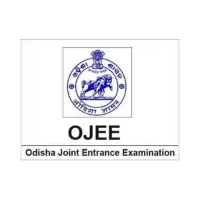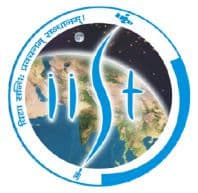Latest Applications Open 2024:
The Odisha Joint Entrance Exam is called a state-level examination conducted under the authority of the state government. The OJEE 2025 Exam is held annually to provide admission in the first-year course of Homeopathy, Ayurveda, and MAM.
This is a state-level entrance test held for registering candidates for UG/PG courses. Through this exam, candidates can take admission in various courses like B.Tech, M. Tech, MCA, BCA, B.Pharm, M. Pharm, Integrated MBA, B. Arch, M. Arch, etc. Admission will be provided to the qualified candidates in the Govt. colleges, universities, and self-financed institutes located in Orissa.
Odisha Joint Entrance Examination (OJEE) is conducted to prepare merit lists for admission in various professional courses in the State. The decision of the OJEE Committee as regards the scope of the syllabus is final.
OJEE Syllabus
The OJEE 2025 Syllabus has been given a Different Course with Sectionwise. Check Below-
B.Pharmacy
Physics (+ 2 Level) – (45 Questions)
Measurements and Motion: Fundamental and derived physical quantities, Concept of Mass, Length and Time, Measurement of different quantities in SI Units. Practical units for measurement of microscopic and macroscopic lengths (AU, light-year, parsec, nanometer, A0). Accuracy and precision of measuring instruments. Measurement errors, Combination of errors, significant figures.
The dimension of physical quantities, Dimension analysis of physical quantities- Conversion of physical quantities from one system of units to another. Concepts of vectors and scalars, Components of vectors, Unit vectors, Addition(triangles law, parallelogram law, polygons law), Subtraction and Multiplication (vector & scalar) of vectors. Lami’s theorem. A frame of reference.
Equations of linear motion for uniformly accelerated bodies (by calculus and graphical method). Newton’s laws of motion, impulse-momentum theorem Conservation of energy and momentum, laws of friction, sliding and rolling friction.
Motion in a plane: projectile motion, Circular Motion- radial and tangential acceleration, Centripetal force, Banking of tracks, Work, energy,
power: work is done by a constant and variable force, work-energy theorem, the potential energy of a spring, motion in a vertical circle, an elastic and inelastic collision in one and two dimensions. Kepler’s laws of Planetary Motion (Statements only).
Newton’s law of Gravitation. Gravitational field and potential, a variation of g with altitude and depth. Earth satellites- Orbital and Escape velocities.
Geo stationary satellites. Moment of inertia, a radius of gyration, theorems of the moment of inertia, Moment of Inertia for rod, ring and circular disc.
Center of the mass of the two-particle system and rigid body, the motion of the centre of mass, a moment of force, torque, angular momentum, laws of conservation of angular momentum and its applications.
Heat & Thermodynamics: Concept of heat and temperature, Scales of Temperature (Celsius, Fahrenheit, Kelvin), Definition of the mechanical equivalent of heat (J), Thermal energy, Heat Capacity, Specific heat of solids and liquids, Latent heat, the principle of calorimetry, thermal expansion of solids, liquids and gases.
Heat transfer- Thermal conductivity of solids, Steady-state, determination of thermal conductivity by Searles method. Kirchhoff’s laws of heat radiation, Stefan’s law of heat radiation, Wien’s law, Newton’s Law of cooling.
Kinetic Theory of gases- Pressure of an ideal gas, mean and RMS speed, Kinetic interpretation of temperature, Degrees of freedom, Law of equipartition of energy. Concept of the mean free path.
Zeroth law of thermodynamics, First Law of thermodynamics, Specific heats of a gaseous system, Relation between Cp and Cv, Work done during Isothermal and Adiabatic processes, Carnot’s conceptual heat engine and its efficiency, coefficient of performance of refrigerator, Second law of thermodynamics, Absolute Scale of Temperature.
Chemistry (+ 2 Level) – (45 Questions)
General Behaviour of Matter:
- Solid State: Characteristics, Classification, Solubility, Melting points, the Crystal structure of simple ionic compounds. Radius ratio and coordination number: density calculation, lattice points, and voids.
- Liquid State: Characteristics, Boiling and Freezing points, Viscosity, Surface tension, Osmosis and Osmotic Pressure, Raoult’s law, Lowering of vapour pressure, Depression of freezing points, Elevation of boiling points, Anomalous molecular masses; Association and dissociation.
- Solutions: Types of solutions, concentration and different ways of expressing concentration (percentage, ppm, strength, normality, molarity, molality, and formality); Interrelations.
- Gaseous State: Gas laws, Kinetic model of gases, ideal gas equation, Van der Waals’ equation, compressibility factor, Average, root mean square and most probable velocities.
- Basic Concepts of Chemistry (Atoms and molecules): Symbols, Valency, Atomic mass, Molecular mass, Avogadro’s law, Mole concept, Equivalent mass of acid-base salt Oxidant and Reductant. Percentage composition, empirical and molecular formula, chemical reactions and calculations based on stoichiometry.
- Structure of atoms and molecules: Fundamentals particles and their properties, Rutherford and Bohr’s models of the atom, Hydrogen spectrum, defects of Bohr’s model, dual nature of matter de-Broglie theory of matter-wave, Heisenberg’s uncertainty principle.
- Energy levels, Shells and Sub-shells, s,p and d orbitals, Quantum numbers, Pauli’s exclusion principle, Aufbau-principle, Hund’s rule, Electronic configuration of atoms, Extra stability of half-filled and filled subshells.
- Chemical bonds: Ionic, Covalent, Coordinate and Hydrogen bond, Hybridisation- sp, sp2, sp3, dsp2,dsp3, d2, sp3
shapes of molecules, VSEPR theory, and Molecular Orbital Theory of simple diatomic molecules. - Periodic classification: Periodic table and periodic laws, s, p, d and f block elements, Periodicity in properties such as atomic and ionic radii, ionization enthalpy, electron gain enthalpy, electronegativity, and oxidation states.
Mathematics (+ 2 Level) – (45 Questions)
- Logic: Statement, Negation, Implication, Converse, Contrapositive, Conjunction, Disjunction, tautology, Truth Table, Principle of Mathematical induction.
- Sets, Relation, and Function: Union, Intersection, Difference, Symmetric difference and A complement of sets, De Morgan’s laws, Venn diagram, Cartesian product of sets, Power Set, Relation and function: domain, codomain, and range of a relation, types of relations, Equivalence relation, Representation of three-dimensional space by RxRxR, types of functions and their domain and range such as:
- Constant function, identity function, modulus function, logarithm function, exponential function, greatest integer function surjective, injective and bijective functions, sum, difference and quotient of functions and
their range, Composite function and inverse of a function. - Number system: Real numbers (algebraic and order properties, rational and irrational numbers), Absolute value, Triangle inequality, AM ≥ GM, Inequalities(simple cases), Complex numbers as ordered pairs of reals, representation of a complex number in the form a +ib and their representation in a plane, Argand diagram.
- Algebra of complex numbers, modulus and argument of complex numbers, Conjugate a complex number, Quadratic an equation in real numbers, and their solution, Relation between roots and coefficients, nature of roots, the formation of quadratic equation with roots.
- Permutations and Combinations, a fundamental principle of counting, permutation as an arrangement and combination as a selection, the meaning of P(n,r) and C(n,r), simple applications, Binomial theorem for positive integral index, general term and middle term, properties of Binomial coefficient and their applications, Identities involving binomial coefficients.
- Determinants and matrices: Determinants and matrices up to third order, Minors and cofactors, Properties of determinants, Matrices up to third order, Types of matrices, algebra of matrices, properties of determinant, evaluation of determinants, Adjoint and inverse of matrix, Application of determinants and matrices to the solution of linear equations (in three unknowns).
- Trigonometry: Compound angles, Multiple and Submultiple angles, Trigonometric identities, Solution of trigonometric equations, trigonometric functions, Properties of triangles, Inverse trigonometric function and their properties.
Biology (+ 2 Level) – (45 Questions)
Botany
- Diversity of plant life: Five kingdom system of classification with their merits and demerits. Structure, reproduction and economic importance of Bacteria, Viruses, Viroids and lichens. Life history of representative members of different plant groups: Spirogyra, Saccharomyces, Funaria, Dryopteris, and Cycas.
- Morphology of angiosperms: Normal and Modified roots, stems and leaves, Inflorescence, Flower and its parts, Pollination, Fertilization, Fruits.
- Taxonomy of flowering plants: Principles and units of classification (species, genus, family) Binomial nomenclature, Studies of important families: Malvaceae, Solanaceae, Fabaceae, Asteraceae, Brassicaceae, Liliaceae.
- Cell: Structure and function: Cell Theory, Totipotency, Prokaryotic and Eukaryotic cell, Structure of typical plant cell: Cell Wall, Cell Membrane, Cell Organelles (Plastids, mitochondria, endoplasmic reticulum, ribosomes, Golgi bodies, Lysosomes, Peroxisomes).
- Important compounds of cell: Structure and functions of water, amino acids, proteins, carbohydrates, and fats. Properties and chemical nature of enzymes. Mode of enzyme action.
- Continuity of life: Cell division: Mitosis, Meiosis, and their significance, Mendel’s laws of inheritance: Monohybrid and Dihybrid cross, Incomplete dominance, Multipleallelism, Quantitative inheritance.
- Genetic material: Structure of nucleic acids. Evidence to establish ‘DNA as genetic material’ (Griffith and Avery’s experiment). Concept of gene, Transcription, and translation in Prokaryotes. Regulation of gene expression – induction and repression.
- Recombinant DNA and Tissue culture technique: Recombinant DNA techniques and its significance. Gene bank, Production of Transgenic plants with examples, Tissue culture technique.
- Microbes in Human Welfare: Household & industrial product, sewage treatment, Biogas production, Biocontrol agents, Biofertilizers.
Zoology
- Animal World: Definition, scope, and branches of zoology, characteristics of living organisms. Two Kingdom and Five Kingdom classifications, their merits and demerits. Salient features and broad outline classification of animals (non-chordates up to phyla and chordates up to classes). Tools for study of taxonomy – zoological parks, sanctuaries, and national parks.
- Animal Histology: Epithelial, connective, muscular and nervous tissue. Details about blood and bone. Organs and organ systems.
- Animal Locomotion: Joints and muscles in movements of man. Mechanism of muscle contraction. Disorders: Arthritis and osteoporosis.
- Animal Nutrition: Intracellular and intercellular digestion. The digestive system of cockroach. Digestive system and physiology of digestion in humans (ingestion, absorption, assimilation, and egestion). Gastrointestinal hormones and their role. Malnutrition and undernutrition.
- Animal Respiration: Types of Respiration (tracheal and Pulmonary). Structure and function of the respiratory system in humans. Mechanism of pulmonary respiration (breathing), transport of respiratory gases. Common respiratory disorders.
- Animal Circulation: Open circulation in cockroaches and closed circulation in humans. Structure of the human heart, cardiac cycle, arteries, veins, capillaries and portal system. Blood pressure, Haemoglobin, blood groups (ABO and Rh), and Blood coagulation. Disorders: hypertension, atherosclerosis, arteriosclerosis, pacemaker.
- Animal Excretion: Types of Excretion (ammonotelism, ureotelism, and uricotelism), Excretion in a cockroach, Excretion in human – structure, and function of the kidney, the role of the liver in excretion. Disorders related to excretion – kidney failure, dialysis. Role of ADH.
- Control and Coordination: Nervous system of cockroaches, and nervous system in humans – central, peripheral and autonomic nervous system. Transmission of nerve impulse. Reflex action.
If you have more questions about OJEE Syllabus, you can write your queries in the comments box below.

As a dedicated Biology Science graduate, I’m passionate about sharing the latest updates in national and state entrance exams through my blog. I aim to keep aspiring students informed about exam trends, important dates, and changes in syllabi. With a keen interest in education, I strive to offer valuable insights for students navigating the competitive landscape of entrance examinations and admission tests. Stay updated with me.


